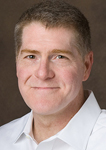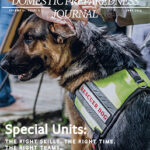- Articles, Emergency Medical Services, Hazmat, Hospitals, Public Health, Science & Technology, Transportation
- Matthew Minson
Lately, there have been a number of discussions about protecting healthcare workers, bolstering the ranks with volunteerism, and utilizing alternative care sites and providers. There have been call-ups of retired clinicians of all stripes, field promotions of health sciences students, and alternative venues for care like telemedicine. However, one group that does not seem to be as considered or fully addressed is that of home health workers. Although they are often tangentially referenced in healthcare environment conversations, this unique, variable, and incompletely accounted landscape is potentially an area of increased risk for providers, patients, public spread, and mortality.
In many discussions, publications, and public callouts by leadership, public health, and others, this quiet and large workforce is generally not mentioned. There are specific instructions for some cohorts of care-provision such as emergency medical services (EMS) or the healthcare setting writ large. There is also long-term care and nursing home guidance.
Underreported & Underprotected
However, it appears that home healthcare is called out only to distinguish arbitrarily between certain considerations of infection potential and the protection requirements of said personnel. The guidance appears to assume that personal protective equipment (PPE) requirements differ from other settings when, in fact, a patient receiving home care may actually be capable of aerosol-generation in close approximation to the caregiver.
This healthcare sub-environment is at risk for not being fully and properly captured in terms of data collection. In part, this is because the participants in home healthcare often vary substantially in training, credentialing, and advocacy at public health strategic levels. Considerations and assumptions of patient contact and a lack of inherent engineering and infection controls make this a potentially devastating vulnerability for all parties concerned and could be a hidden vulnerability in the overall healthcare strategy. In fact, in assessments performed in 2016, distinct state requirements of accountability for “who is providing home care” and the potential effects listed a cohort of personnel that included: community attendant services (CAS), registered nurses (RN), licensed vocational nurses (LVN), home health aides (HHA), personal care assistants (PCA), dialysis technicians, and medical equipment suppliers, among others. This is a large and stratified group with significant risk profiles who deserve more attention in terms of PPE guidance and inclusion in the “healthcare system” universe.

Additional Guidance Needed
In terms of consideration, most of these settings are not mentioned or included in terms of PPE requests and priority, even as those personnel are being asked in many states to engage in the healthcare setting as part of surge. One might consider that they are already engaged. Additionally, they are not part of the PPE prioritization. In a time of shortage, of course, the first consideration should go to the high aerosol-generating and proximal areas such as critical care, respiratory therapy, and the interventional theater. Admonition, however, for all who may be at risk should not be overlooked.
In some guidance, the home health setting calls out masks distinct from N95-mask protections. One gap that needs to be closed would be additional guidance for an assessment of the risk factors in terms of procedures, aerosol generation, distance, barriers, and more as well as the allowance of the more sophisticated respiratory and other barrier provisions. The healthcare system is, after all, an ever-broadening universe in the 21st century.

Matthew Minson
Matthew Minson, MD, is a physician and has served as a senior health official at the local, state, and federal level. He is the author of a series of books championing individual health and social advocacy published by Texas A&M University press and has been a contributor to C-Span, NPR, and PBS. His website is www.preparetodefendyourself.com
- Matthew Minsonhttps://www.domesticpreparedness.com/author/matthew-minson






